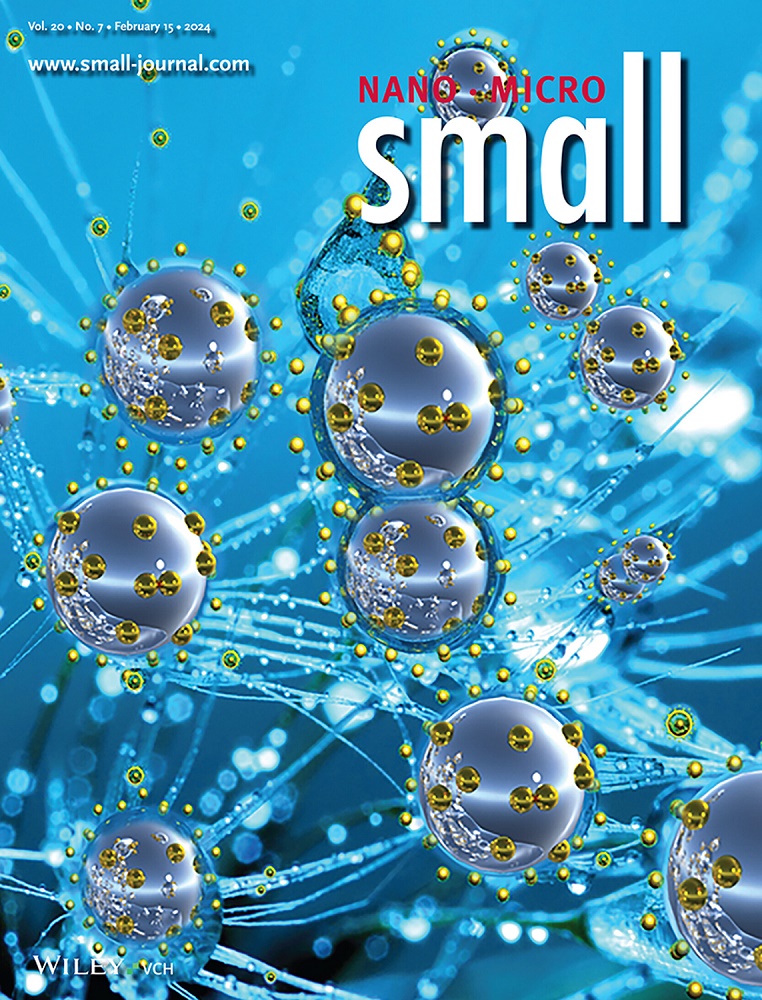Strategic Core‐Shell Integration for Advancing Z‐Scheme Heterojunctions: Interface‐Engineered ZnIn2S4/Ag2WO4@Ag Ternary Architecture for Enhanced Visible‐Light‐Driven Photocatalytic H2 Production and Pollutant Degradation
IF 13
2区 材料科学
Q1 CHEMISTRY, MULTIDISCIPLINARY
引用次数: 0
Abstract
The spatial inhomogeneity of interfacial modifications, despite conventional approaches like co‐catalyst deposition and dopant incorporation, presents a critical bottleneck in achieving optimal charge carrier dynamics and sustained photocatalytic performance at semiconductor heterojunctions. To address this challenge, this study introduces a novel approach by encapsulating the wide‐bandgap semiconductor Ag推进Z - Scheme异质结的战略性核壳集成:界面工程ZnIn2S4/Ag2WO4@Ag三元结构,用于增强可见光驱动的光催化H2生产和污染物降解
尽管采用了诸如共催化剂沉积和掺杂等传统方法,但界面修饰的空间不均匀性是实现半导体异质结最佳载流子动力学和持续光催化性能的关键瓶颈。为了解决这一挑战,本研究引入了一种新方法,将宽带隙半导体Ag2WO4 (AWO)封装在等离子体热点(金属Ag)的颗粒壳中,形成一个定义良好的界面,促进一致的电荷转移并提高光催化效率。设计的Ag2WO4@Ag (AWO@Ag)策略性地与ZnIn2S4 (ZIS)纳米片集成,以设计核壳集成的Z - scheme异质结。优化后的AWO@Ag(12.5%)在ZIS纳米片上的集成表现出了显著的产氢性能,达到了3142µmol h−1g−1,超过了纯ZnIn2S4(1311µmol h−1g−1)。通过合理的界面设计和强大的氧化还原能力,该系统在60分钟内实现了97.16%的甲基橙光降解效率。此外,在中性电解介质中,与RHE相比,该系统在2.2 V下具有3.98 mA cm - 2的光阳极电流,通过AWO@Ag集成增强了水氧化能力。该系统在氢气生成、染料降解和水氧化方面的卓越性能,验证了这种先进的结构设计通过其多功能特性实现了稳定和持续的光催化性能。
本文章由计算机程序翻译,如有差异,请以英文原文为准。
求助全文
约1分钟内获得全文
求助全文
来源期刊

Small
工程技术-材料科学:综合
CiteScore
17.70
自引率
3.80%
发文量
1830
审稿时长
2.1 months
期刊介绍:
Small serves as an exceptional platform for both experimental and theoretical studies in fundamental and applied interdisciplinary research at the nano- and microscale. The journal offers a compelling mix of peer-reviewed Research Articles, Reviews, Perspectives, and Comments.
With a remarkable 2022 Journal Impact Factor of 13.3 (Journal Citation Reports from Clarivate Analytics, 2023), Small remains among the top multidisciplinary journals, covering a wide range of topics at the interface of materials science, chemistry, physics, engineering, medicine, and biology.
Small's readership includes biochemists, biologists, biomedical scientists, chemists, engineers, information technologists, materials scientists, physicists, and theoreticians alike.
 求助内容:
求助内容: 应助结果提醒方式:
应助结果提醒方式:


